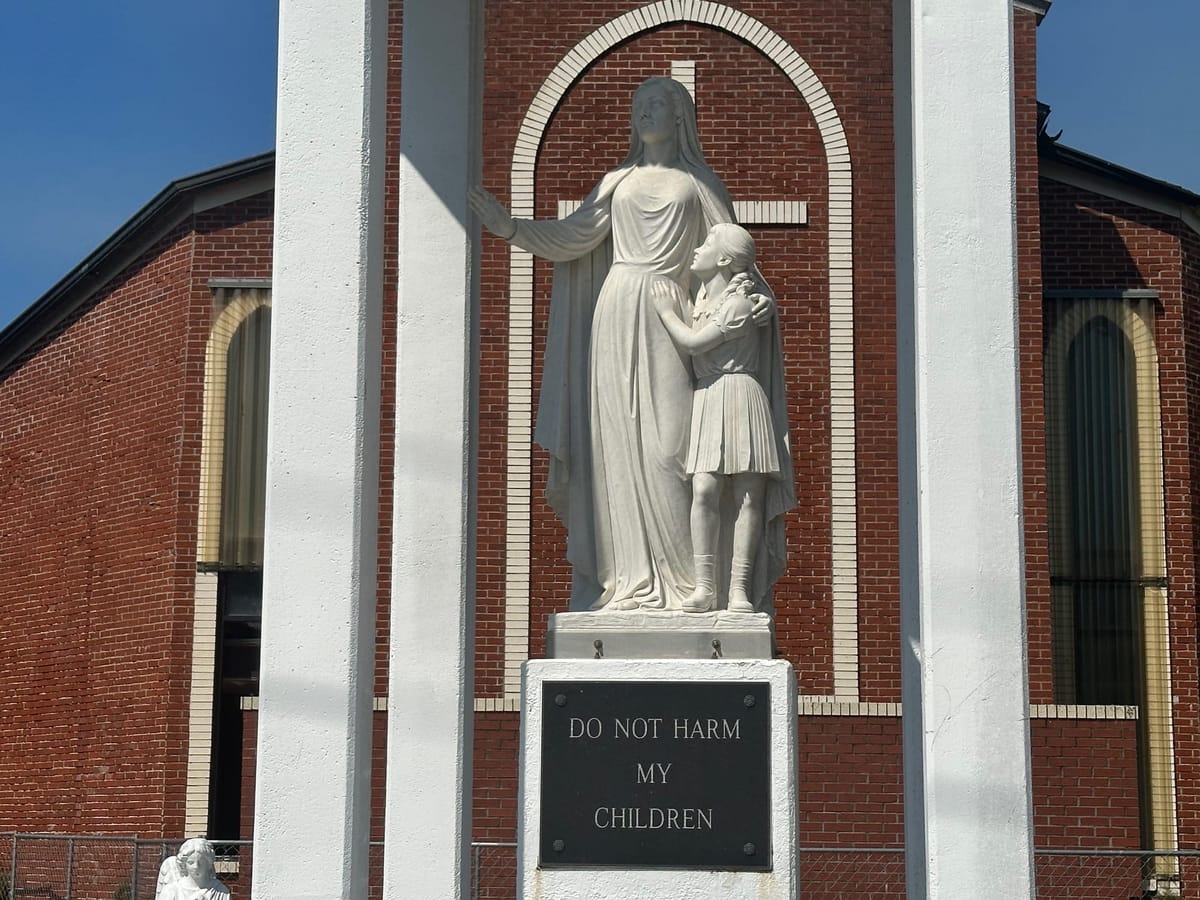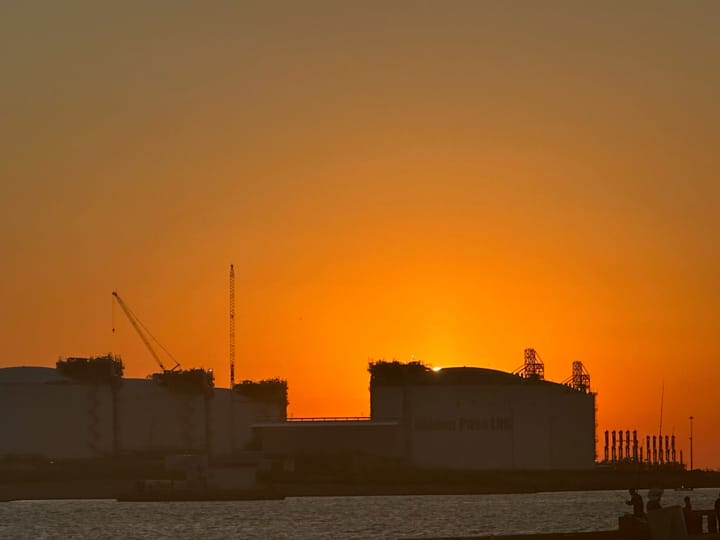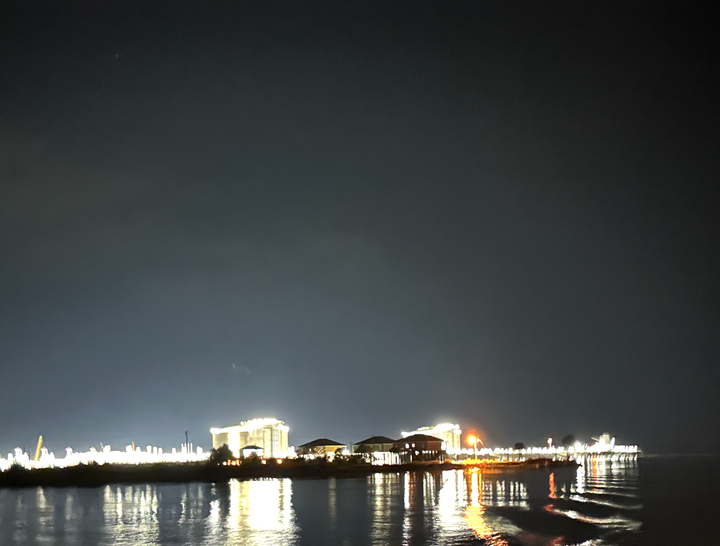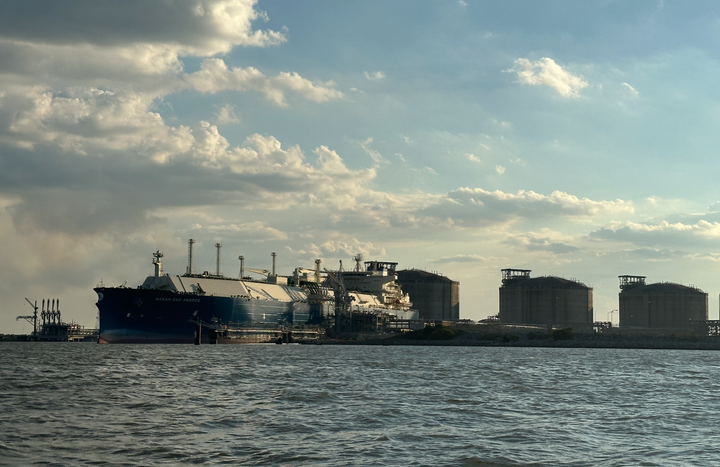THE HARMS OF US LNG – FROM CALCASIEU PASS TO PUERTO LIBERTAD

The U.S. is working hard to get the rest of the world hooked on expensive and dirty liquefied natural gas (LNG) and is getting plenty of help from the banking system in other countries like Japan. The example I will focus on today is the proposed Mexico Pacific LNG export facility in Puerto Libertad on the Gulf of California in Mexico, which is a project of U.S. investors backed by JP Morgan and Japanese banks. But first I want to talk about Louisiana.
The coast of Louisiana is really flat and consists of vast wetlands which are home to diverse wildlife but are under assault from development and industry.
“Louisiana has about 40% of coastal wetlands in the lower 48 states; they support fish, waterfowl, and fur-bearing animals as well as unique cultures like that of the Acadians. The fish and wildlife resources of Louisiana’s coast produce over $1 billion each year in revenues.
But Louisiana has the highest coastal loss rate because of natural and human causes. Over the past three decades, Louisiana has lost as much as 35-40 square miles of coastal wetlands a year.”

Image: On the road to Calcasieu Pass Credit: Justin Mikulka
Louisiana is where the company Venture Global is trying to build an LNG exporting empire and is the location of their first project — Calcasieu Pass. To get to the Calcasieu Pass LNG export facility you need to drive through the wetlands for about an hour. On the way you will pass the abandoned Star of the Sea church which features the statues and sign out front in which Mother Mary states, “Do not harm my children.” But as is clear from the status of the abandoned church, no one heeded her message.

Image: On the road to Calcasieu Pass. Credit: Justin Mikulka
Many buildings in the area are abandoned due to storm damage. Now all new construction, what little there is, is on stilts. On the way you will pass by another church in the area that is abandoned. How healthy is a community if its places of worship are abandoned? Is this a sign of the economic prosperity promised as part of the LNG investments in places like Puerto Libertad, Mexico?

Image: On the road to Calcasieu Pass Photo: Justin Mikulka
While driving through places like Sweetlake, you might see a big plume of smoke on the horizon. The locals barely notice. Fire and smoke are just part of life in the area, oftentimes from hydrocarbon flares.

Image: On the road to Calcasieu Pass Photo: Justin Mikulka
Later that day we saw another huge plume of smoke on the horizon.

Image: Some sort of fire, source unknown.
No one reacted. It’s just how things are there despite this being the view from a major LNG exporting facility full of highly explosive products.
When you arrive in the small town of Cameron on the coast where Venture Global’s Calcasieu Pass is located you do not see economic prosperity, only echoes of past prosperity.

In those days, it was different, as noted on the sign and in this article by Nick Cunningham for Gas Outlook:
“Cameron was the largest producer of seafood in the entire country, hauling in hundreds of millions of pounds of fish, shrimp, and oysters each year. But those days are long gone.”
As the sign says, there was “no pollution,” which is also a relic of that bygone era.

Image: Venture Global’s Calcasieu Pass LNG facility in the distance.
Venture Global boasts on its website that it has “invested significantly in Louisiana’s economy” but there is no evidence of it around Cameron. One of the local shrimp boat captains told a story of how he put his son through college to get a degree that could get him a job working at the LNG facility. He got the degree and the company had no interest in hiring him. This is standard operating procedure when fossil fuel projects come to town. They promise jobs but all the jobs go to workers from somewhere other than the local community. You can watch from a distance as some people get rich off of these these massive projects, it’s just not an option for you. And if you rely on the local fishing industry, you will likely lose your ability to make a living.
THE FATE THAT AWAITS MEXICO
In Cunningham’s article he quotes the local fisherman Phillip Dyson who says the LNG companies are trying to force them out.
“They want you gone. They’re just making it harder and harder, trying to push you out,” Dyson said.
Remember how Cameron used to be a major seafood production center? That is the situation for the current Gulf of California where US investors and foreign banks want to build a massive new LNG export terminal. There is a reason Jacque Cousteau called it “the world’s aquarium.”Why would he say that?
“The Gulf of California is one of the most biologically diverse seas on the planet. It supports over 5,000 species of marine organisms, including a remarkable variety of fish, marine mammals, sea turtles, and invertebrates. This biodiversity is due to its complex oceanographic conditions, including nutrient-rich upwelling and diverse habitats such as coral reefs in the Gulf of California, Mexico and mangrove forests in the Sea of Cortez.”
As for what that means to the Mexican economy it is significant.
“The Gulf of California’s fisheries, which include shrimp, squid, tuna and sardines, account for 70% of Mexico’s fishing and contribute USD $ 900 million annually to its economy. The spectacular natural beauty of the region attracts more than 1.5 million tourists a year. Although critical to the national economy, fisheries and coastal development also threaten the very ecosystems that produce fish, attract tourism and protect the coast from storms.”
Just as Venture Global was sold as a boon to the local community in Louisiana, the Mexico Pacific LNG project is being presented in the same way. The corporate video promoting it makes it seem like a project that will have no environmental impacts.
In 2019 this post from Duke’s Nicholas School of the Environment describes the town of Puero Libertad as“A beautiful town that has developed along the shores of the Gulf and is characterized by its strong fishing history…”Will anyone describe Puerto Libertad that way in the future if these foreign companies and bankers are allowed to build this facility?
WHALES OR GAS?
There is well organized resistance to this project including a campaign to educate Mexicans about the stark choice they face – Whales or Gas? The massive LNG tankers are a serious risk to the whales in the Gulf of California. New research shows that “ship collisions are now a leading cause of death worldwide for large whale species.” Will Mexico risk the beauty and biodiversity of the Gulf of California to let foreign actors get rich shipping dirty Texas gas to China? Puerto Libertad has a chance to remain a place like Cameron once was with “No pollution” and a thriving fishing industry. Ideally they will hear and heed the words of Mother Mary in Cameron, “Do not harm my children” and will decide to protect what they have instead of letting foreign companies take it from them. When it comes to LNG facilities, local fishing communities have bad options: there is nothing to be gained and everything to lose. Oilfield Witness produced this video about the shrimpers in Cameron which includes this warning from Captain Ray, “You don’t want it [LNG] in your area, I promise you, if you are a commercial fisherman. Because if you get that in your area, you get ready, your production is gonna fall.” We all should support efforts to stop the expansion of LNG, which is driving climate change with methane emissions and destroying pristine places like the Gulf of California.
End note: Pollution makes for good sunsets.

And when night falls, the flares burn at the LNG facilities.




Comments ()